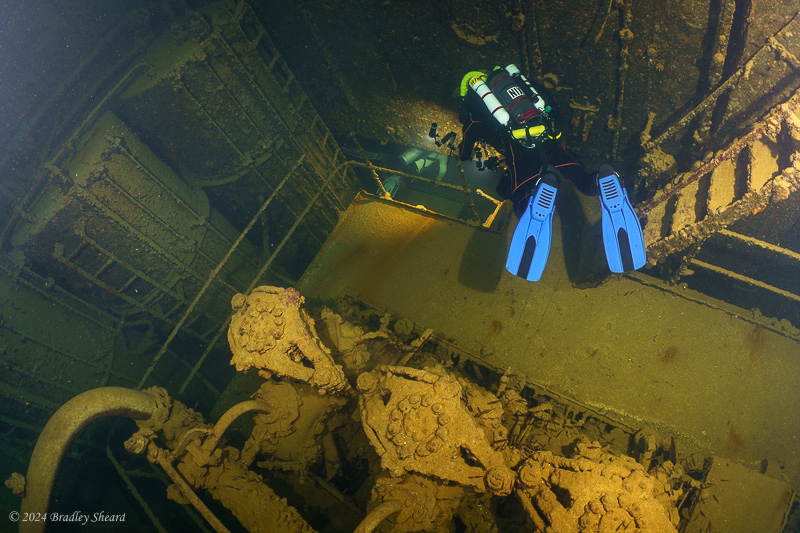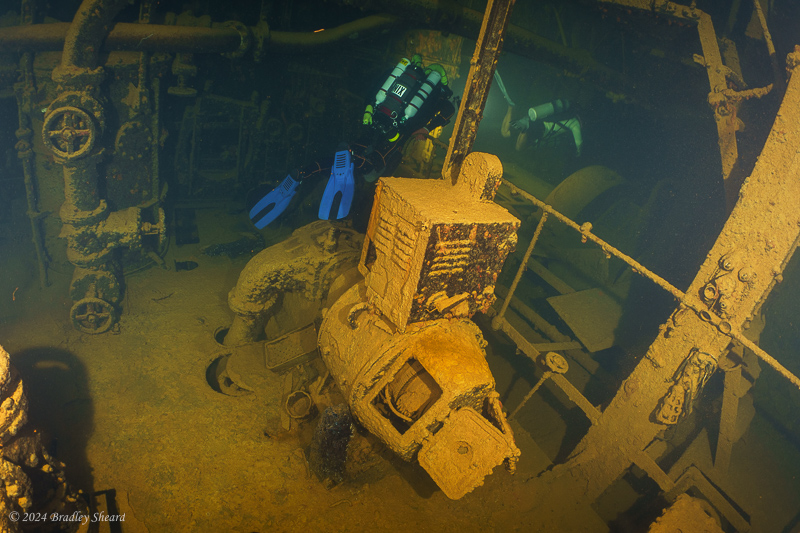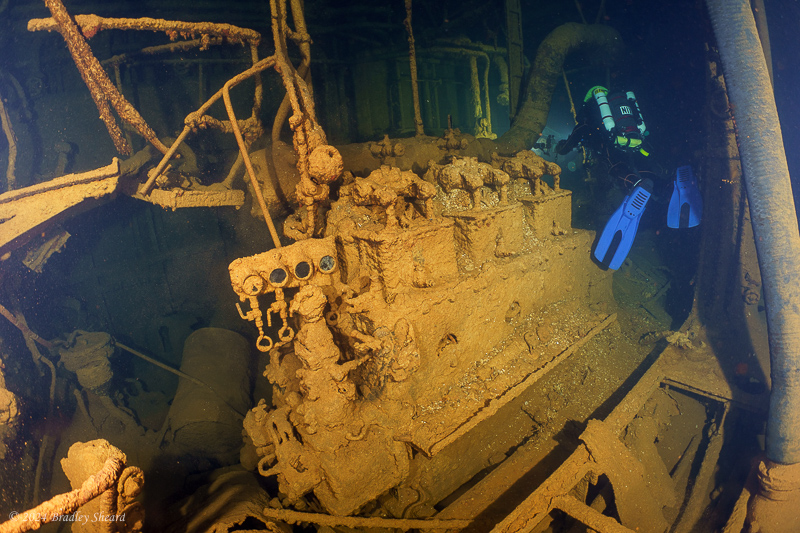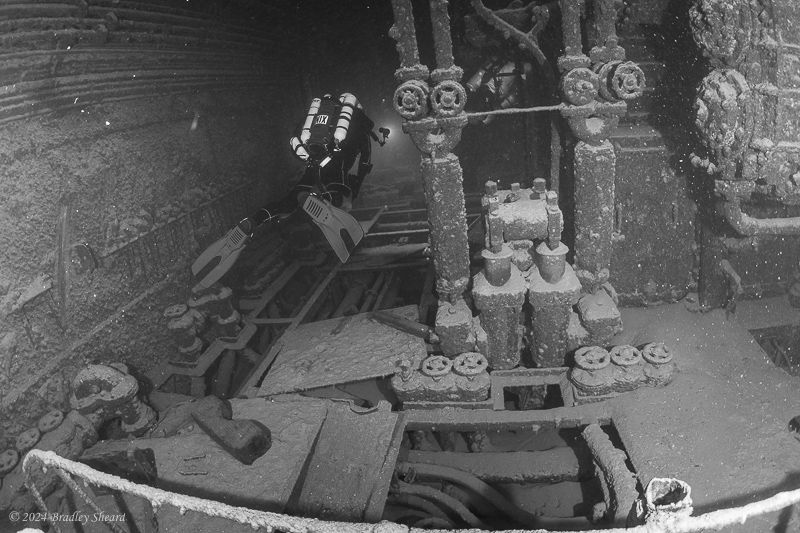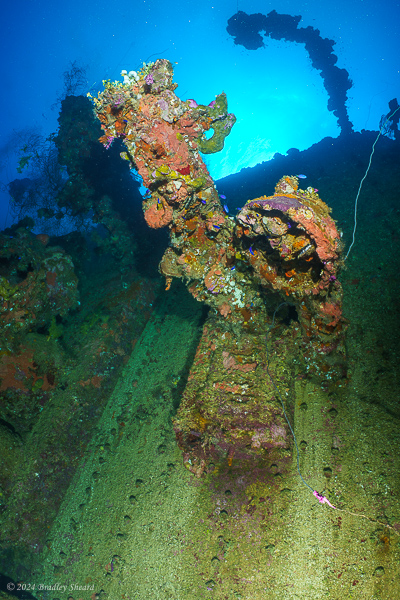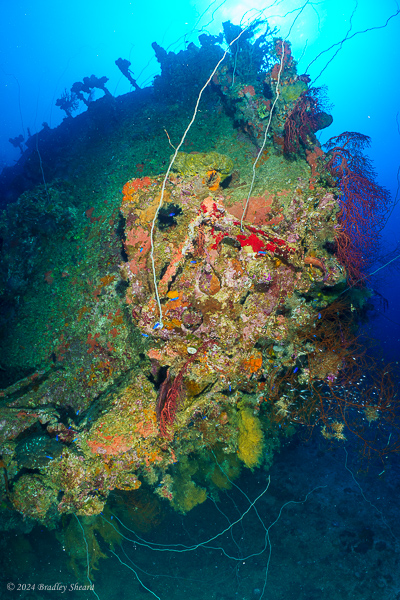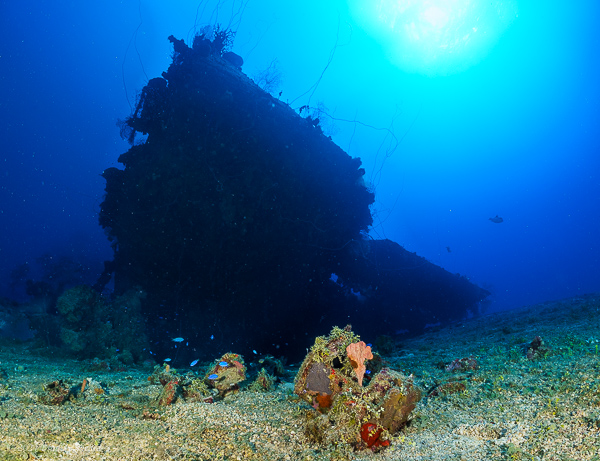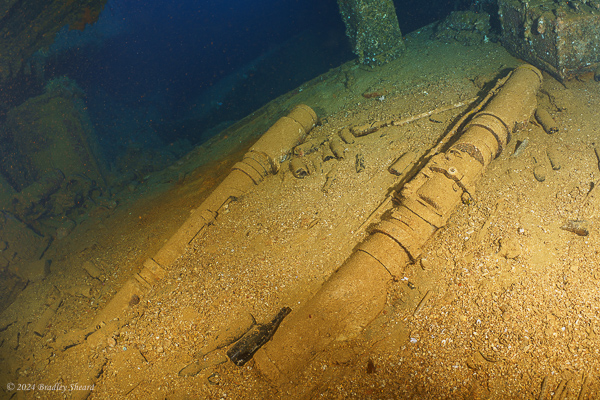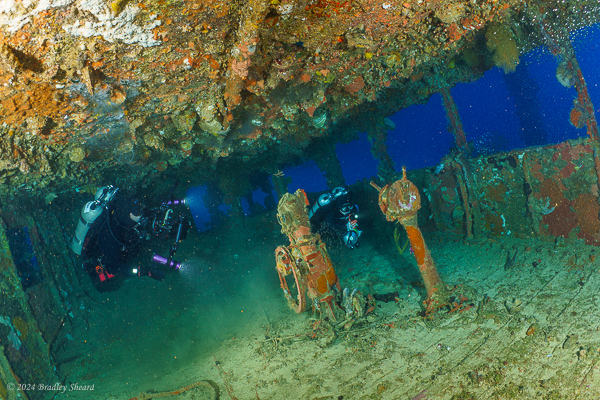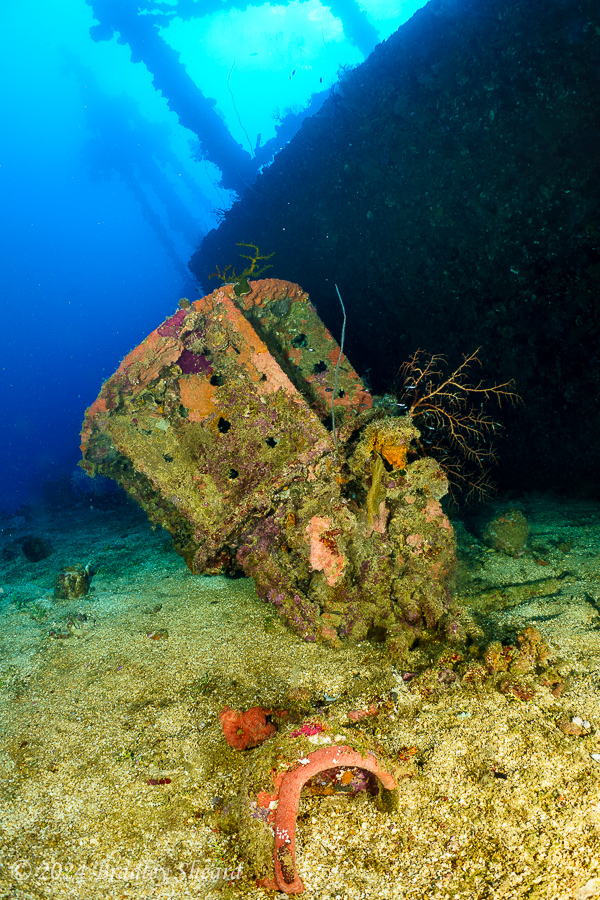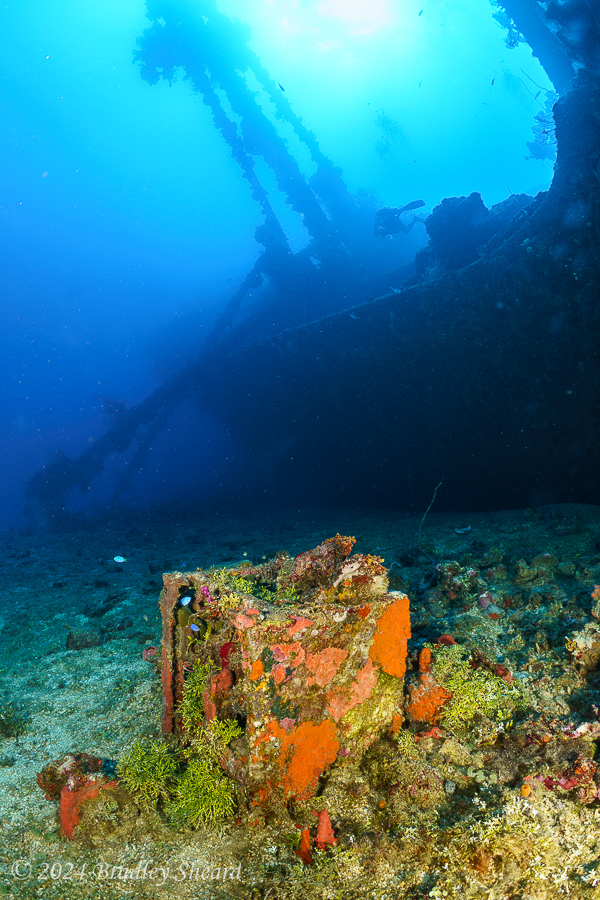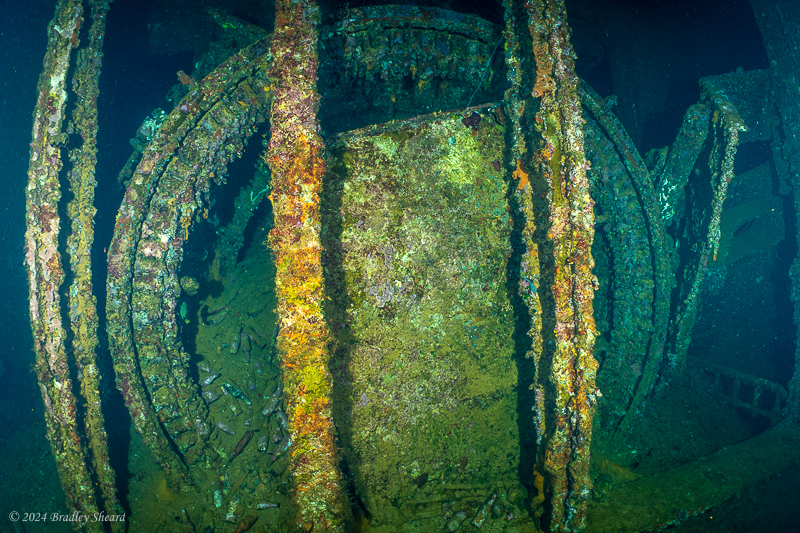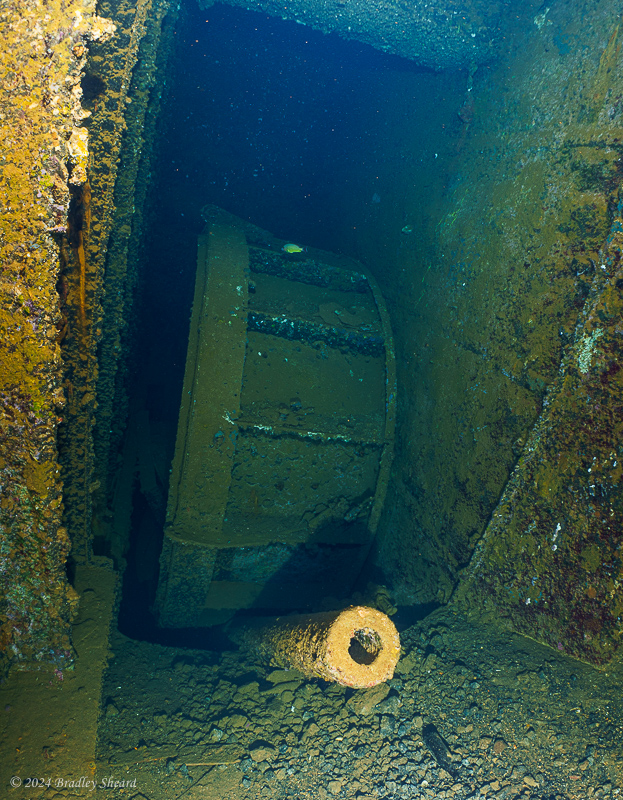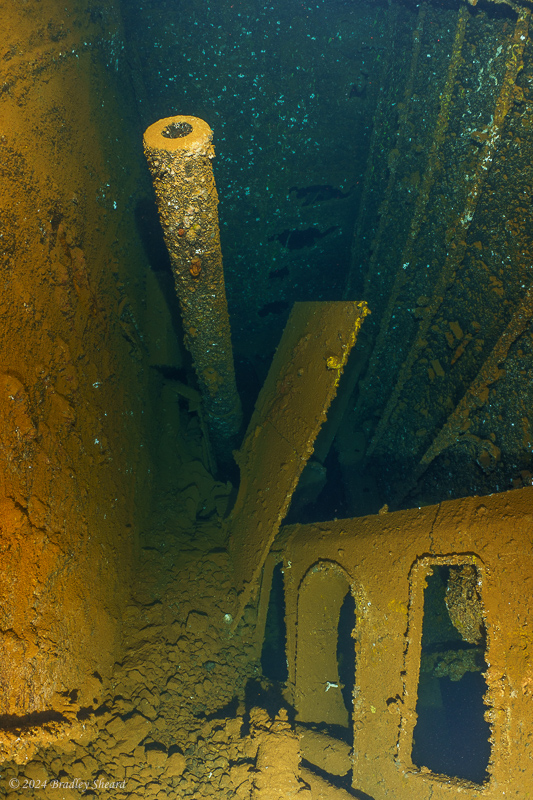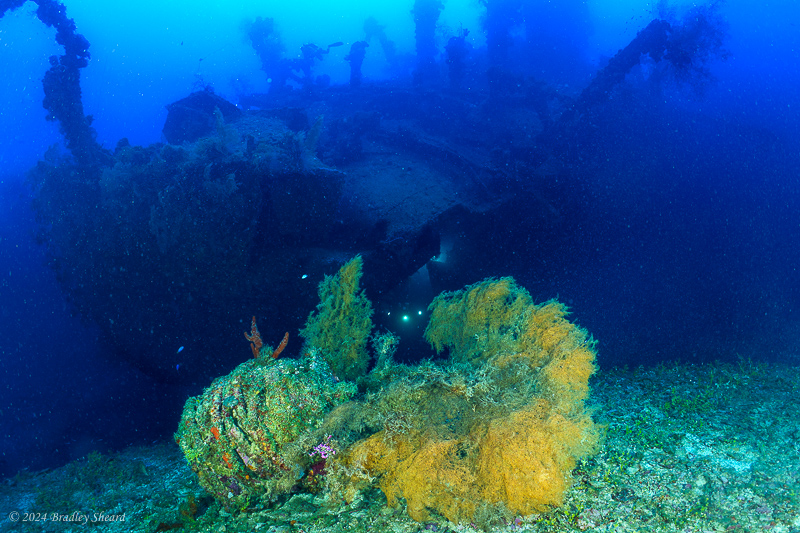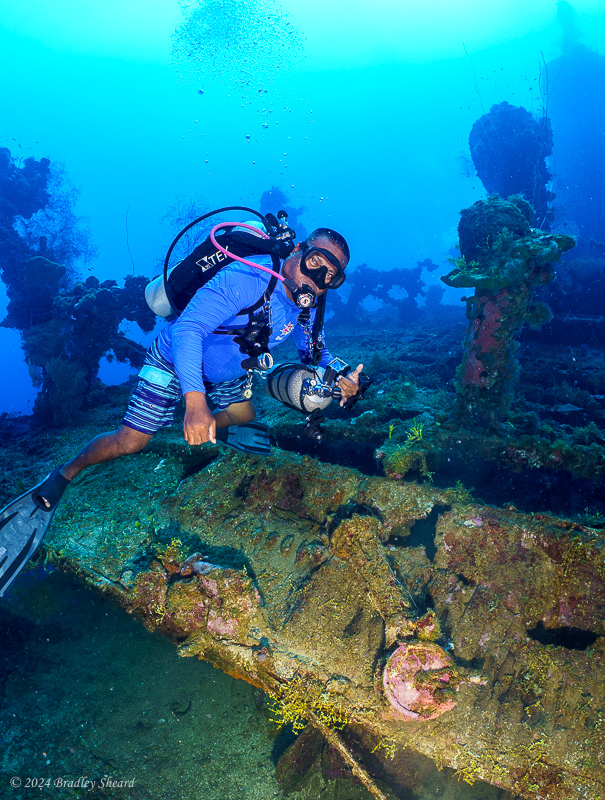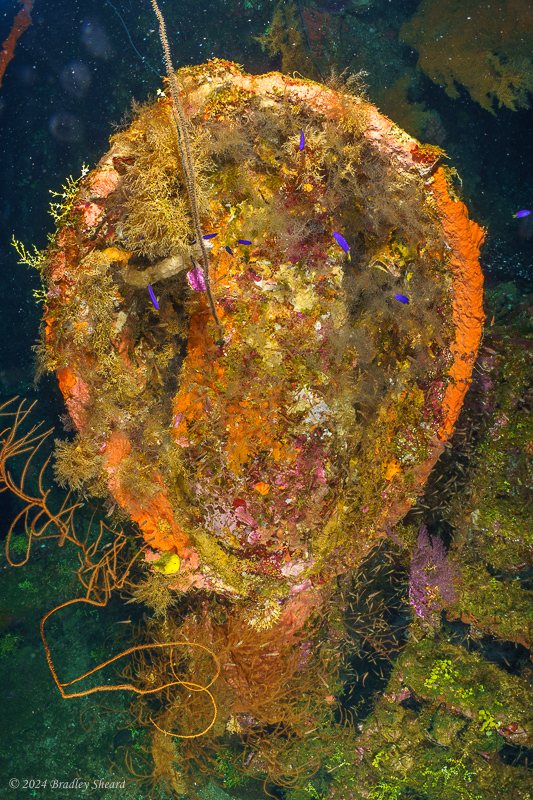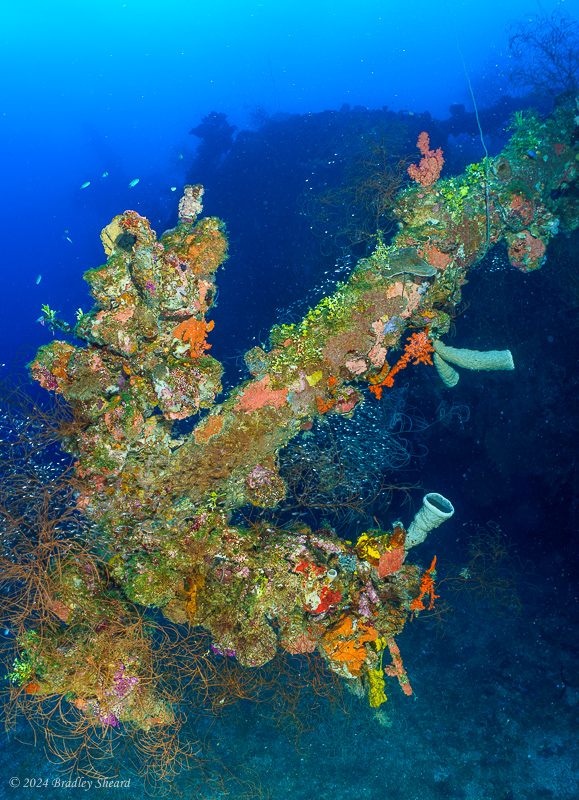Chuuk (Truk) 2024
Truk (now called Chuuk) was one of the main Japanese Pacific naval bases during the Second World War, and the shipwrecks found here were sent to the bottom in 1944 during carrier raids conducted by the American Navy. The first major assault on the Truk naval base was Operation Hailstone, conducted over two days (February 16-17, 1944) by no less than 9 US aircraft carriers. The raid resulted in the sinking of 45 ships and another 26 damaged. A second carrier attack was conducted on April 29-30, 1944, this time with a force of 12 aircraft carriers. This attack concentrated on shore installations, and most shipping had been evacuated from the atoll.
Reference: Bailey, Dan E. "WWII Wrecks of the Kwajalein and Truk Lagoons," North Valley Diver Publications, 1992.
This was my sixth trip to this wreck-diving paradise, and it never disappoints! I had visited the islands in 1999, 2004, 2015, 2018 and 2023. You can see that a number of the wrecks are beginning to deteriorate noticeably since I first started coming here, but this is still one of the best wreck diving destinations in the world. If you get the chance, it is not to be missed!
| - Fujisan Maru - |
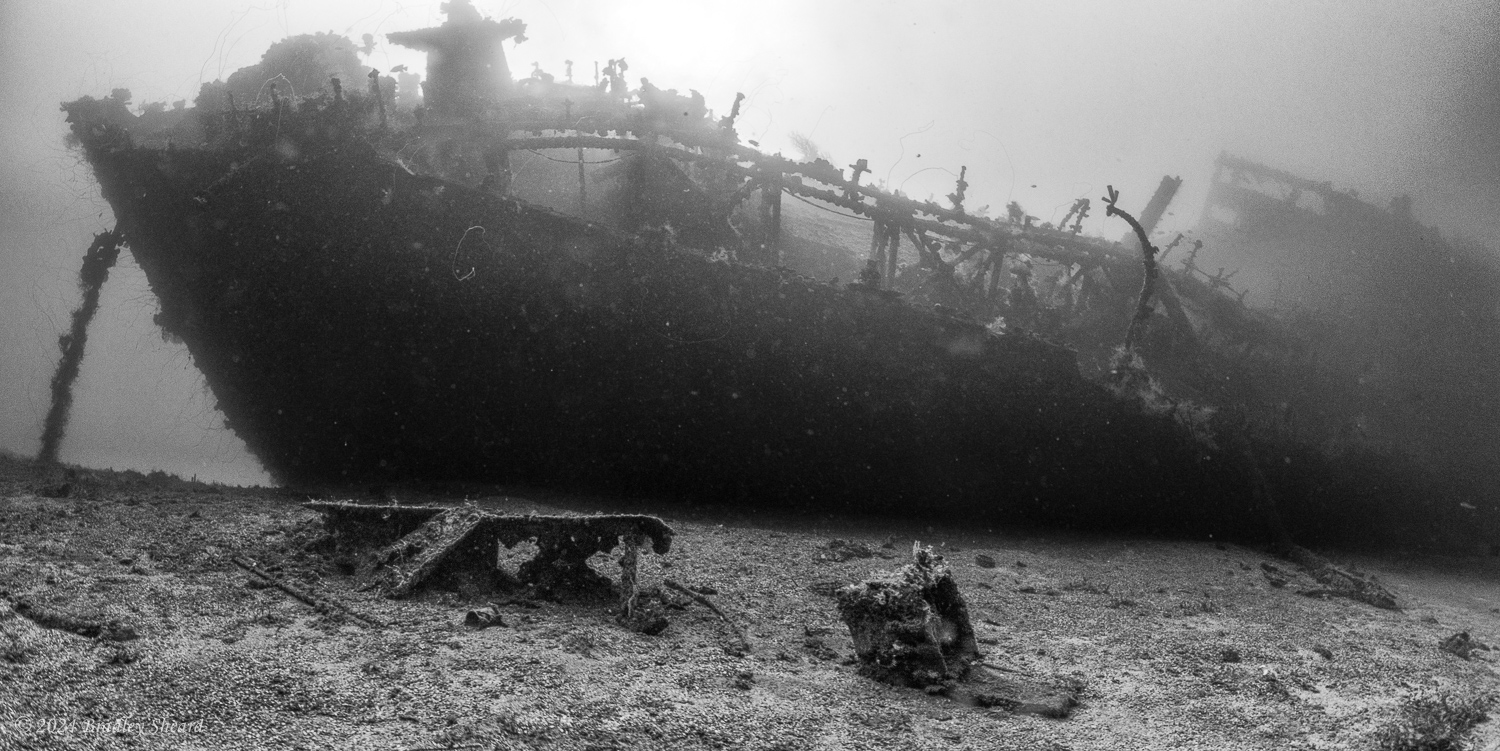 |
|
The 512-foot long tanker Fujisan Maru is believed to have been hit by a single 1000 lb bomb while trying to flee the lagoon via the North Pass on the morning of February 16. She apparently returned to the lagoon and was hit the following morning by dive bombers from the USS Enterprise. She suffered a hit on her stern that sent her to the bottom Northeast of Dublon Island, where she sits all by herself in 180-200 feet of water. Above is the bow section of the wreck with her bridge at far right. The centerline catwalk typical of tankers is clearly evident running from the bridge up to the focs'le. |
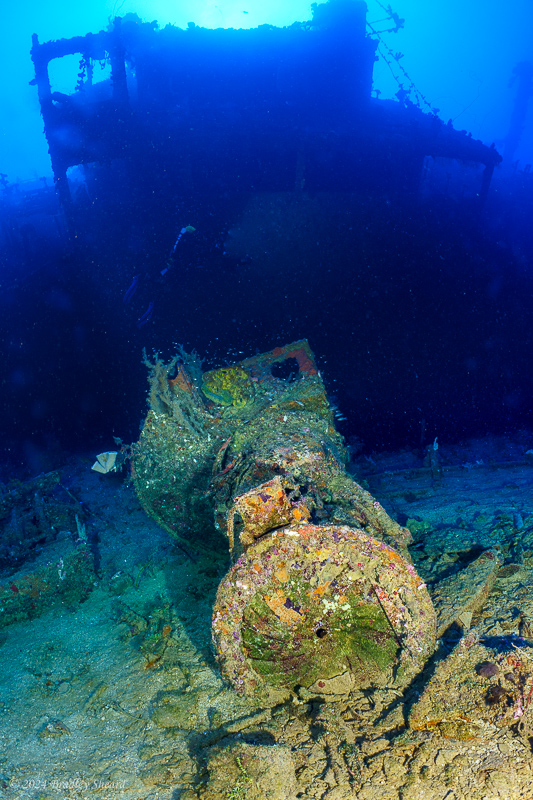 | 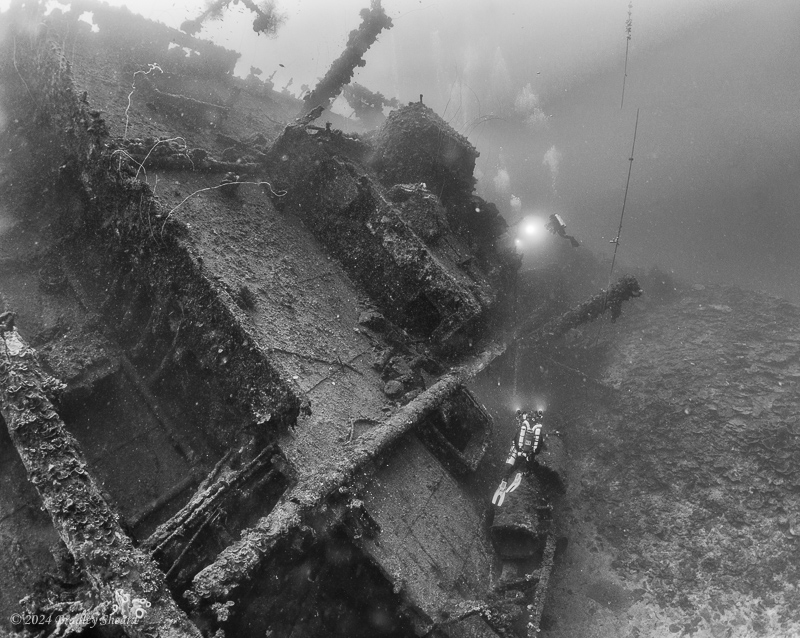 |
|
I found what seems to be a searchlight with the iris shutter clearly visible lying beneath the tanker's bridge (above, left). At right, divers explore the tanker's stern section. The wreck is largely intact and listing to port, with relatively little marine growth, presumably due to the deeper depth of the wreck. |
| - Oite - |
 |
|
The destroyer Oite was sunk by Grumman TBF Avengers from the USS Bunker Hill during Operation Hailstone. The wreck lies in two pieces in 200 feet of water near the North Pass. This panoramic view of the two sections shows part of the stern section to the left, while the entire bow section, lying nearly upside-down, is to the right. |
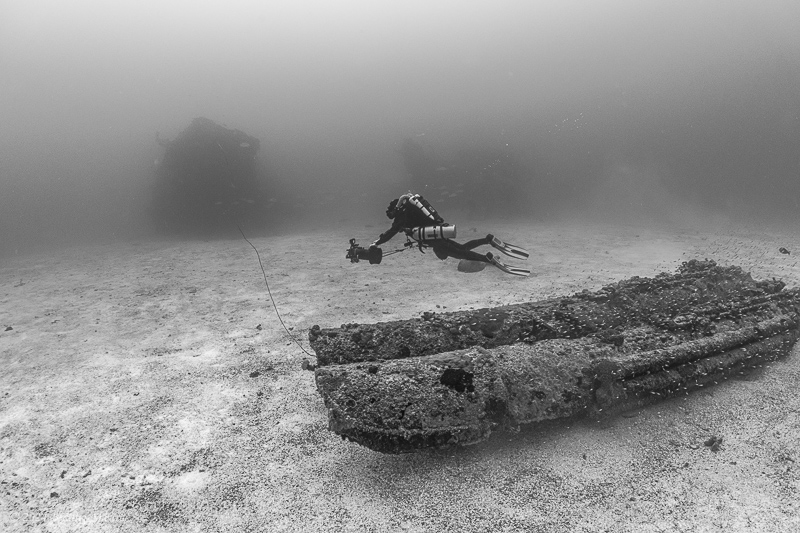 | 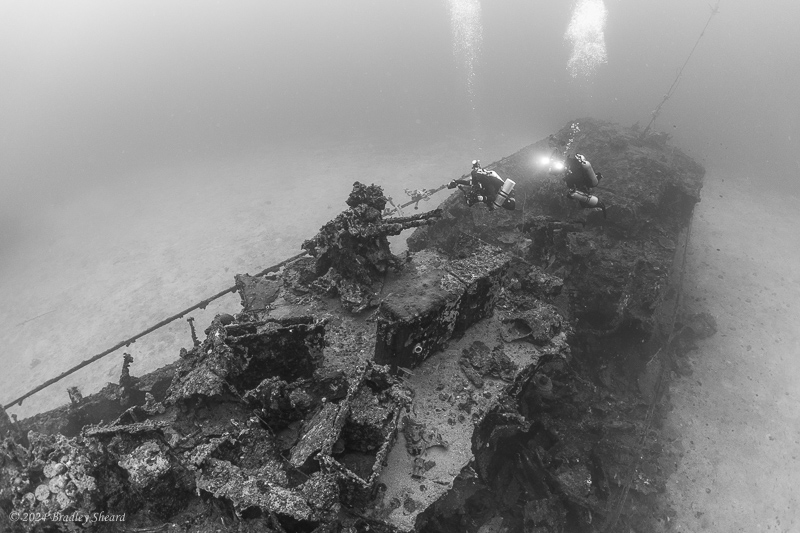 |
|
A torpedo launcher (above, left) lies between, but some distance away from, the separated bow and stern sections of the wreck, dimly visible in the distance (with Mark Nix in foreground). Becca and Mike Boring photographing the anti-aircraft gun on the ship's stern section (above, right). |
| - Fujikawa Maru - |
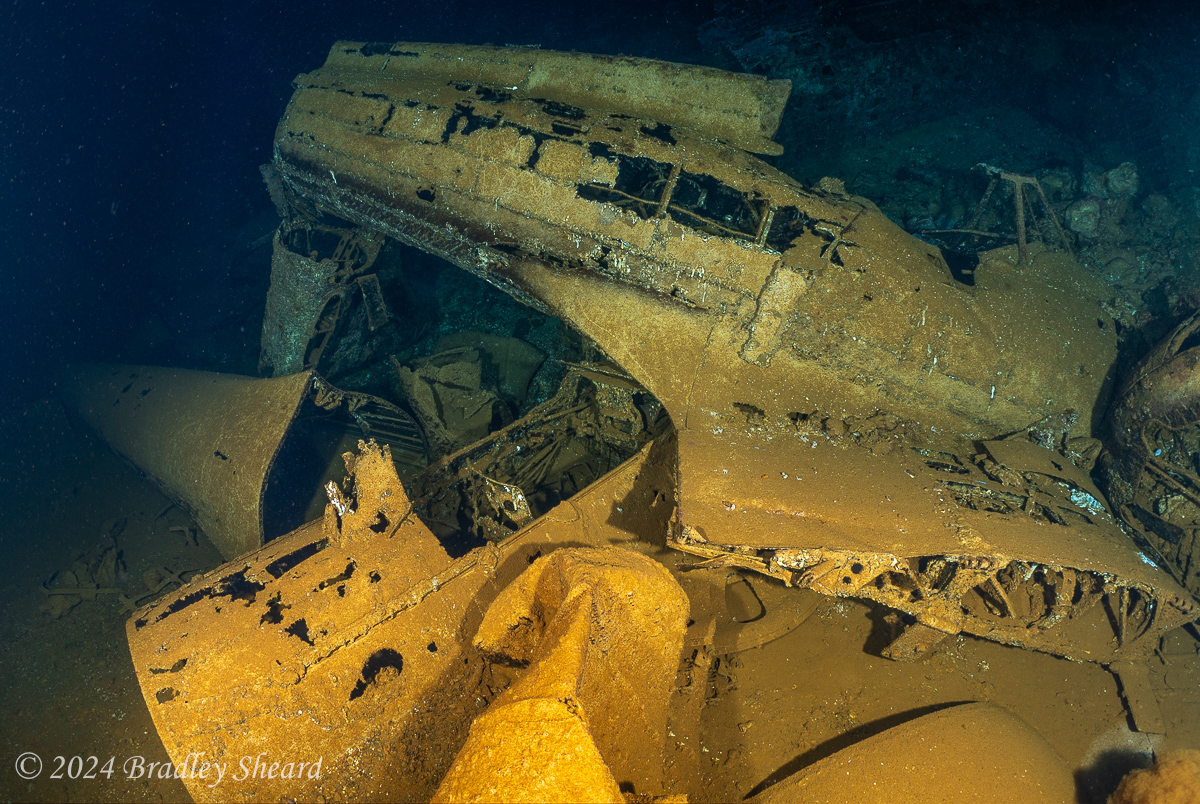 |
|
To me, the most interesting aspect of the wreck of the Fujikawa Maru is the aircraft lying in one of the forward holds, where there are (disassembled) aircraft wings and fuselages lying jumbled along with fuel drums. In the image above, we have two different Japanese figher aircraft; the aircraft on top is apparently the lone surviving (in the world according to internet sources) Mitsubishi A5M "Claude" fighter--predecessor to the famed Japanese "Zero" fighter. This aircraft was used extensively in Japan's China campaign. The aircraft beneath the "Claude" is a Mitsubishi A6M "Zeke," or "Zero" fighter fuselage. |
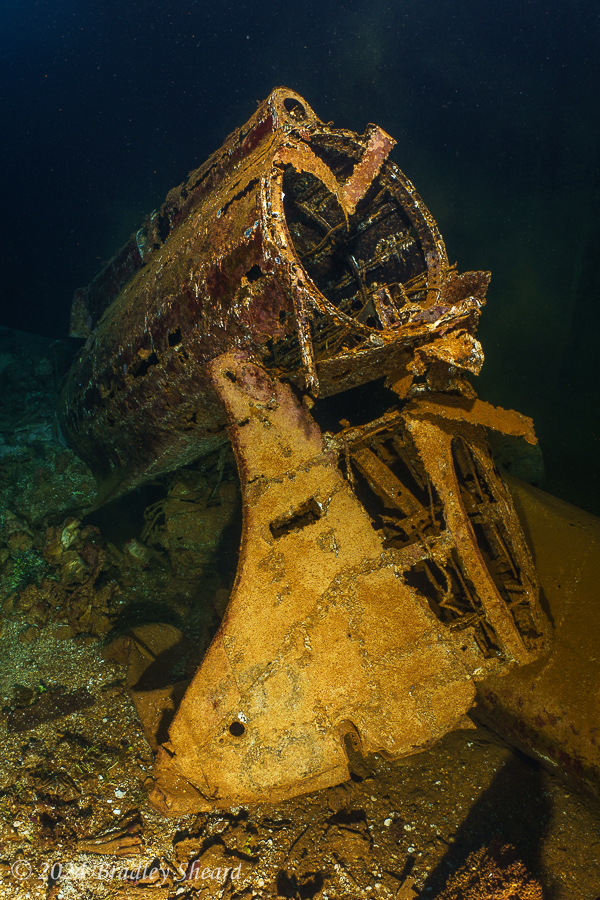 | 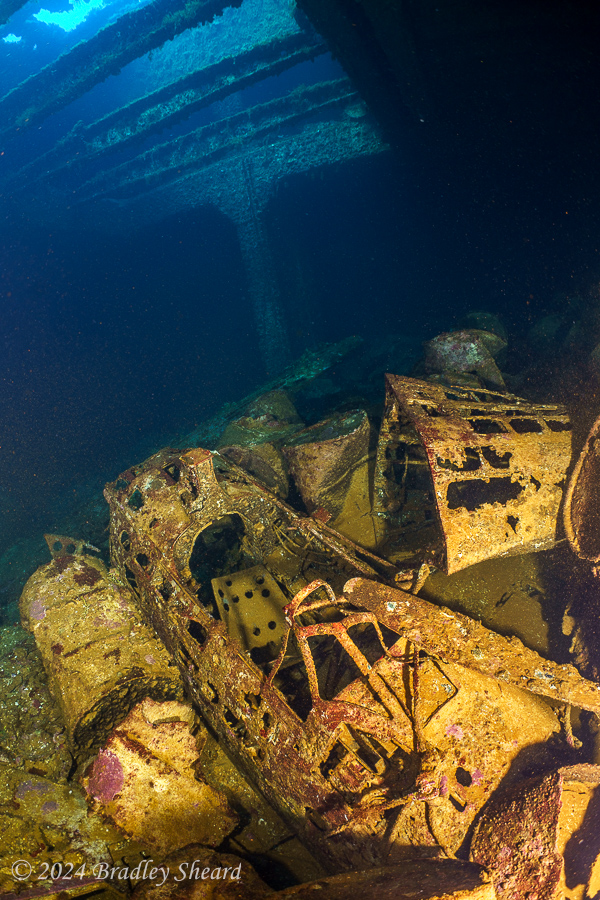 |
|
Since I was here in 2023, the tail section of the A5M "Claude" has broken off the fuselage (reportedly by an irresponsible diver who sat on it!!), and now hangs from the forward section of the fuselage (above, left). Nearby sits the cockpit of an A6M "Zeke" or "Zero" fighter (above, right). |
| - San Francisco Maru - |
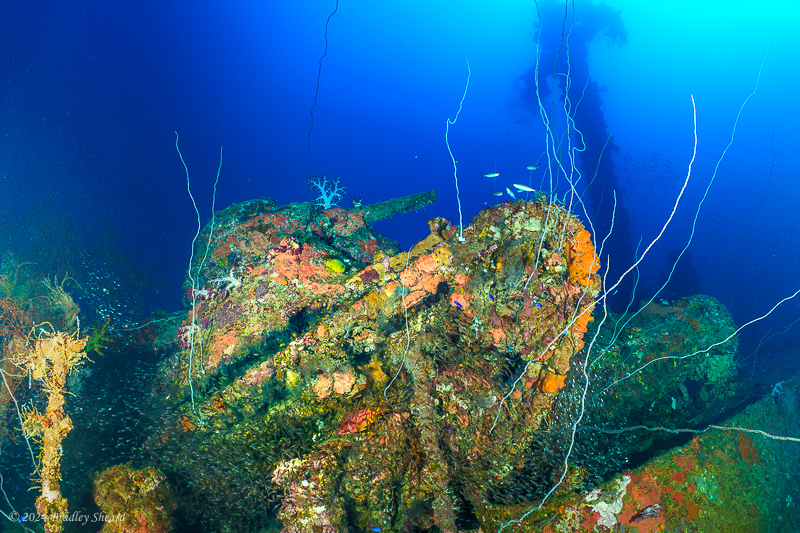 | 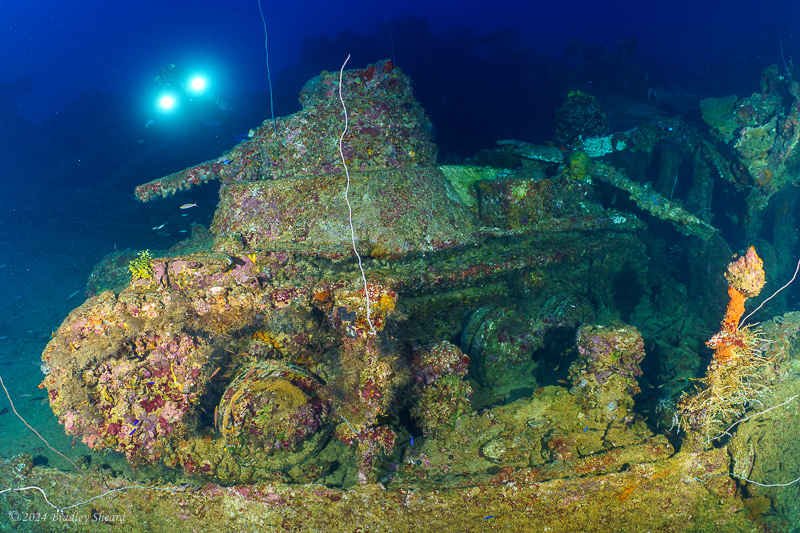 |
|
One of the most iconic sights on the San Francisco Maru are the three tanks sitting on the forward deck, just in front of the remains of the ship's bridge. The deck is sagging badly these days, and it seems only a matter of time before it all collapses. |
| - Sankisan Maru - |
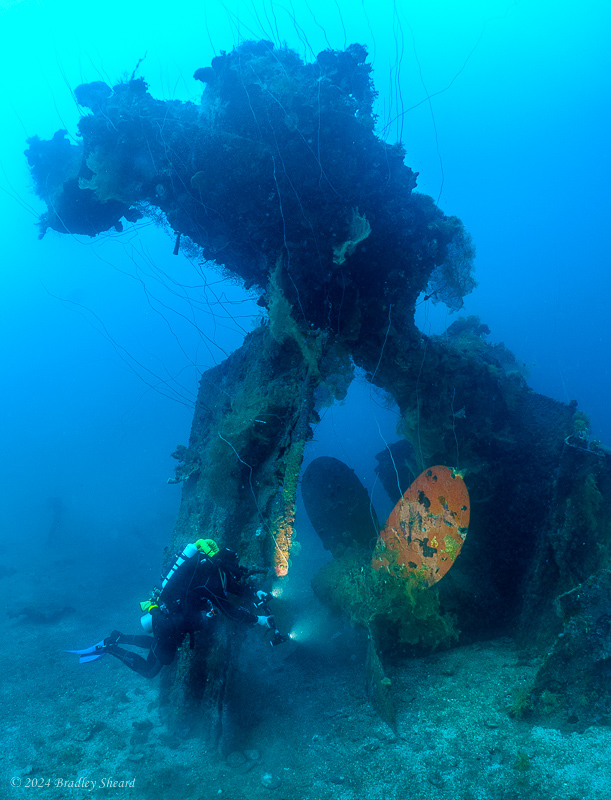 | 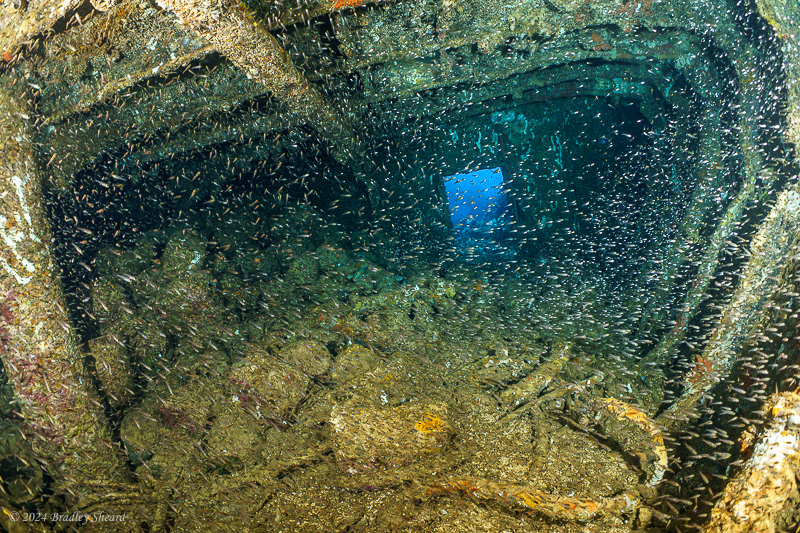 |
|
The two extreme ends of Sankisan Maru. (at left, Mark Nix with lights): The stern was apparently blown off the main wreck and lies a couple hundred feet away sitting in ~160 feet of water--all that remains is the propeller and rudder. (right): Inside the focs'le through a hole in the bow; this hold is filled with drums and always seems to have schools of little glassy fish inside. |
| - Amagisan Maru - |
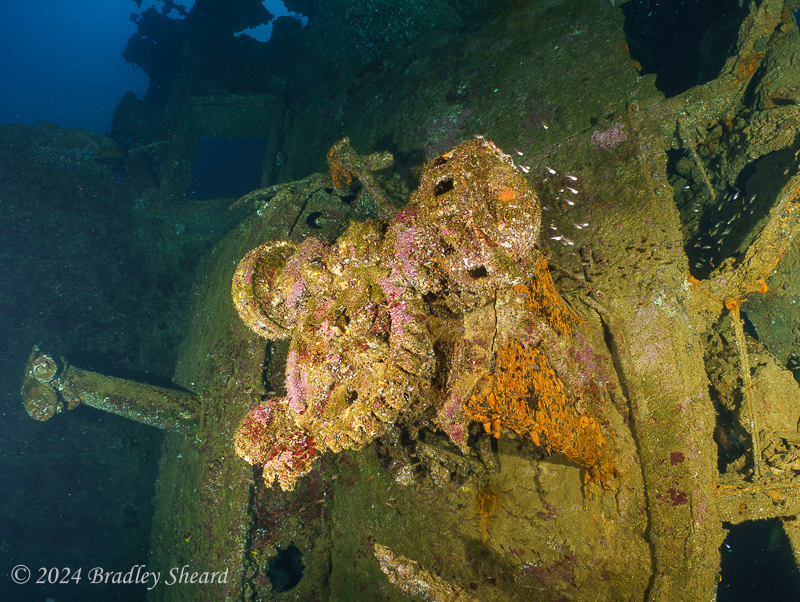 | 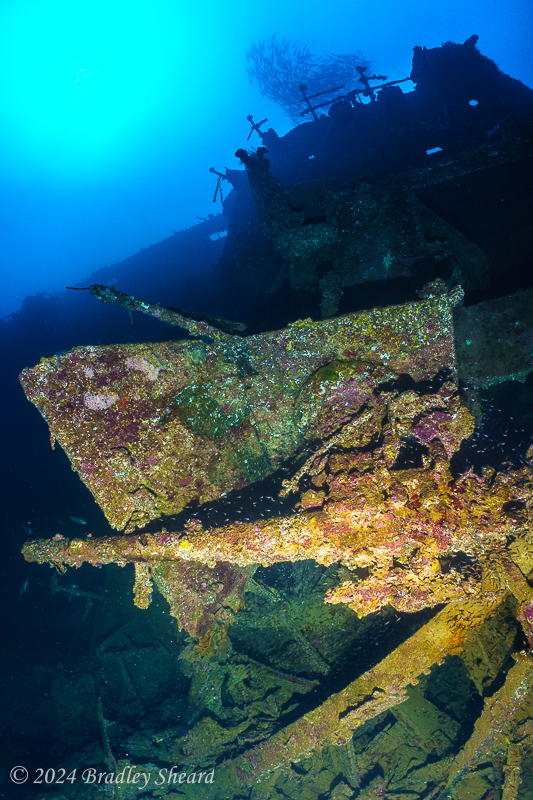 |
|
Amagisan Maru was attacked by no less than 5 SB2C Helldivers and 4 TBF Avengers from USS Bunker Hill on the first morning of Operation Hailstone. She was hit by both bombs and torpedoes, lighting her afire. Aircraft on the second strike did not see her, as she had already sunk. The ship lies canted to port on a 140 foot bottom. Standing on her canted stern fantail is a dual-wheel helmstand, the wheels long gone, but recognizable by the twin helm wheel hubs with their characteristic square spoke holes (above left). Just forward of the helmstand is a second instrument base for either a telegraph or compass; forward of this is a large gun (above, right). |
| - Nagano Maru - |
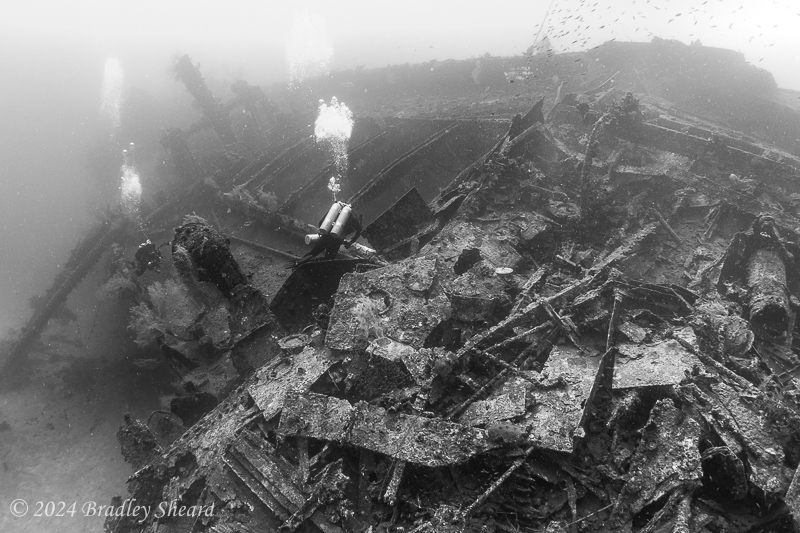 | 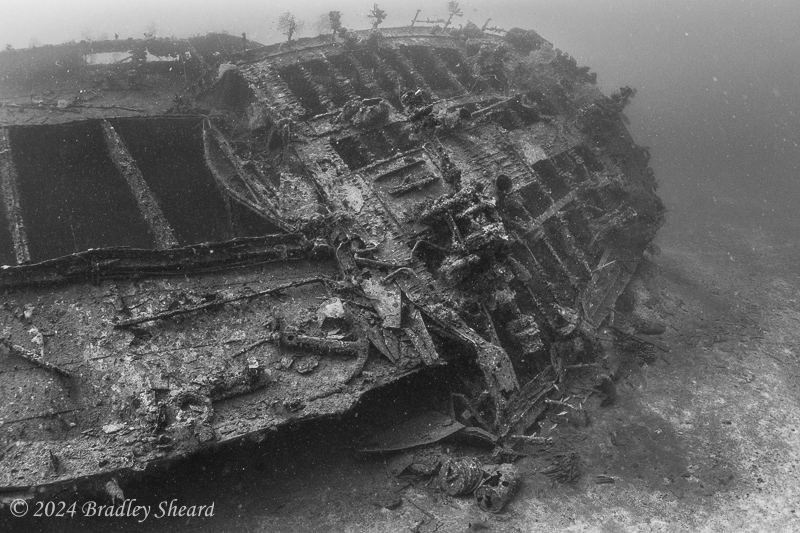 |
|
Nagano Maru is one of the deeper wrecks in the lagoon, with approximately a 190-foot bottom, lying about half-way between the San Francisco Maru and the Reiyo Maru. When I first dived this wreck in 1999, the entire superstructure was standing erect, but now it has completely collapsed (above, left). The stern is still partially intact (above, right), but it appears that the entire fantail is sliding off the hull and may soon end up on the lagoon bottom. |
| - Aichi E13A "Jake" Seaplane - |
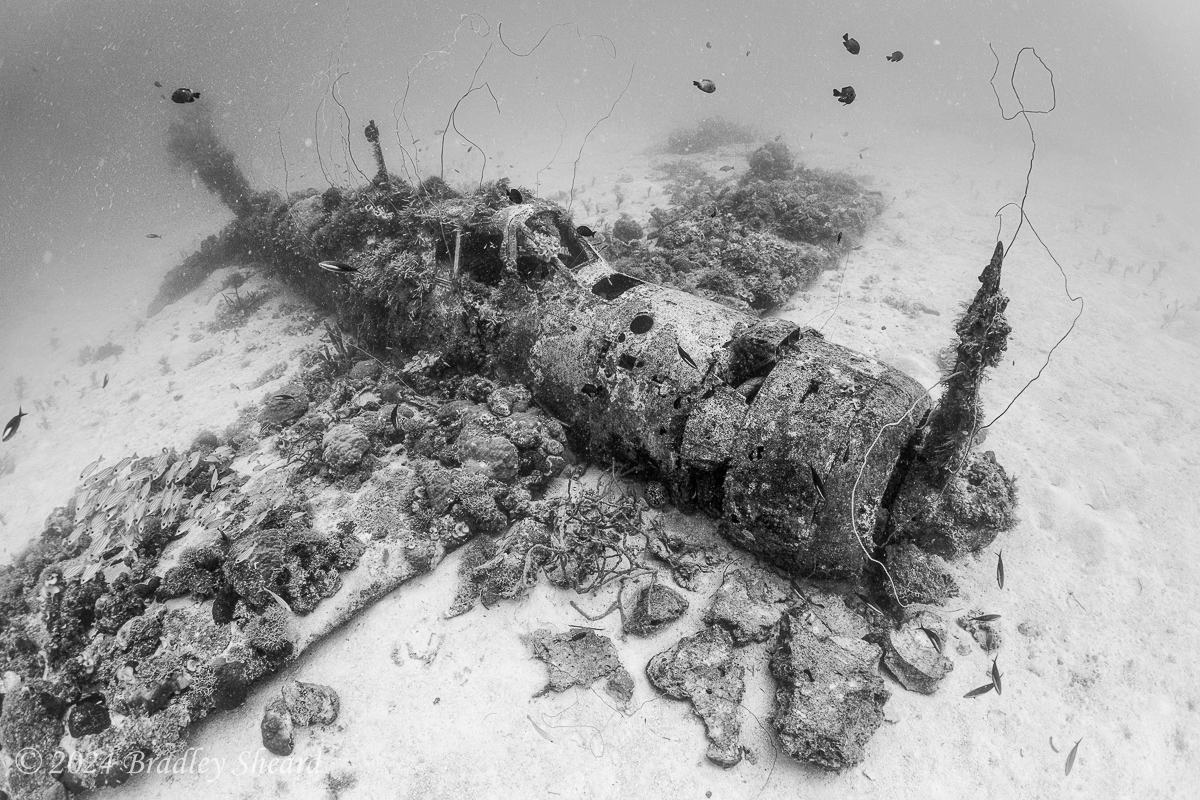 |
|
The Aichi E13A "Jake" was a long-range reconnaissance seaplane that carried a crew of three and was used extensively by the Japanese navy during the war. This aircraft was recently discovered sometime in 2023 and lies in approximately 80 feet of water. The float pontoons were apparently ripped off the fuselage, with one lying nearby to the largely intact wing and fuselage shown here. The engine is in excellent condition, as is the cockpit, and the straight propeller blades would seem to indicate that the prop wasn't spinning when it sank. |
**** All the above images were taken with a Sony A7RIV camera in a Nauticam housing with Ikelite strobes. Images were processed in Adobe Lightroom, Adobe Photoshop, PTGui and Nik Silver Efex Pro 2. ****
All images, text and content Copyright © Bradley Sheard. All rights reserved.










